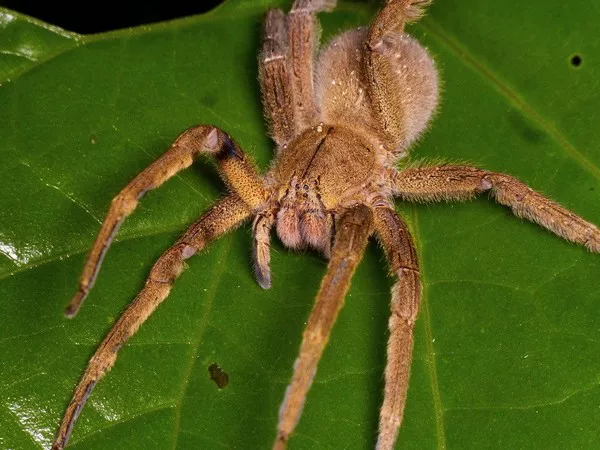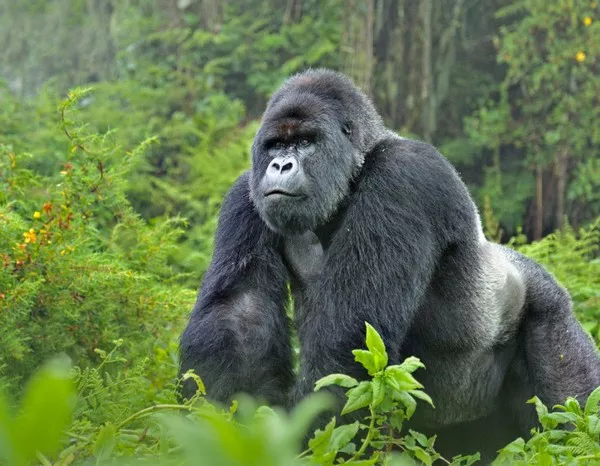Spiders, with their intricate webs and fascinating silk-spinning abilities, often evoke a sense of wonder and fear. Among the vast array of arachnids, one species stands out for its deadly potency – the infamous Brazilian wandering spider (Phoneutria). In this exploration, we delve into the captivating world of the world’s deadliest spider, unraveling its characteristics, habitat, and the potential dangers it poses.
Taxonomy and Classification:
The Brazilian wandering spider belongs to the Ctenidae family and is scientifically classified under the genus Phoneutria. With eight recognized species, these spiders are predominantly found in South and Central America. Notable species include Phoneutria nigriventer, Phoneutria fera, and Phoneutria boliviensis.
Physical Characteristics:
One cannot discuss the Brazilian wandering spider without acknowledging its remarkable physical attributes. Typically, these spiders have a leg span of about 6 inches (15 cm), and their body length can range from 0.8 to 1.6 inches (2 to 4 cm). Their elongated legs, marked with distinctive patterns, contribute to their formidable appearance.
Habitat and Distribution:
Native to the rainforests of South and Central America, the Brazilian wandering spider thrives in diverse ecosystems. These spiders are often found on the forest floor, lurking in foliage or concealed within debris. Their ability to adapt to various environments contributes to their widespread distribution.
Hunting Behavior:
Unlike web-spinning spiders, the Brazilian wandering spider is a ground dweller. It adopts a hunting strategy, actively roaming the forest floor in search of prey. Their diet primarily consists of insects, small mammals, and amphibians. This predatory behavior, coupled with their potent venom, makes them formidable hunters.
Venom Composition and Potency:
The venom of the Brazilian wandering spider is a complex cocktail of neurotoxins, enzymes, and peptides. Studies have revealed that these spiders possess one of the most potent venoms among all arachnids. The venom primarily affects the nervous system, leading to a cascade of symptoms in envenomed individuals.
Toxicology and Effects on Humans:
When it comes to human interactions, the Brazilian wandering spider’s venom poses a significant threat. In particular, the venom contains a potent neurotoxin known as PhTx3, which can cause a range of symptoms, including severe pain, nausea, paralysis, and in extreme cases, respiratory failure.
Statistically, bites from the Brazilian wandering spider are relatively rare, and fatalities are exceedingly uncommon. However, the severity of symptoms can vary widely, with some bites causing mild discomfort while others lead to more serious consequences. Immediate medical attention is crucial in managing the effects of a bite.
Venom Extraction and Medical Research:
Paradoxically, the venom of the Brazilian wandering spider has become a subject of interest in medical research. Scientists are exploring potential applications for components of the venom in drug development. PhTx3, for instance, has shown promise in developing medications that could aid in the treatment of erectile dysfunction.
Mitigation of Human-Spider Conflicts:
Given the potential dangers associated with encounters with the Brazilian wandering spider, efforts have been made to mitigate human-spider conflicts. Educational campaigns, especially in regions where these spiders are prevalent, aim to raise awareness about preventive measures and first aid protocols.
See Also: Top 10 MOST Venomous Spiders In The WORLD!
Conclusion:
In conclusion, the Brazilian wandering spider stands as a captivating yet perilous inhabitant of the rainforests of South and Central America. Its remarkable physical characteristics, potent venom, and hunting behavior contribute to its reputation as the world’s deadliest spider. While human interactions with these arachnids are infrequent, understanding their habits and the potential risks involved is crucial. As research continues to unravel the mysteries of the Brazilian wandering spider, both its perils and potential medical benefits underscore the complex relationship between humans and the natural world.
You Might Be Interested In:























